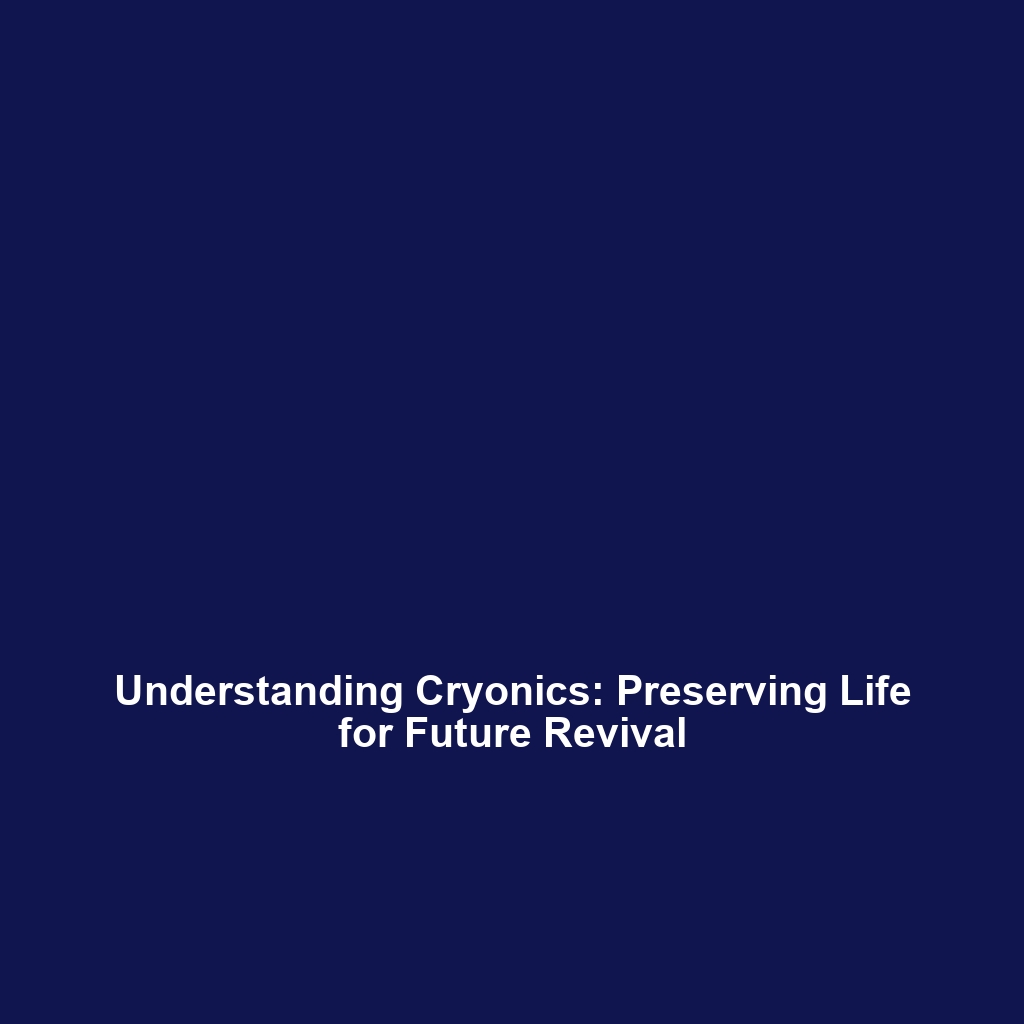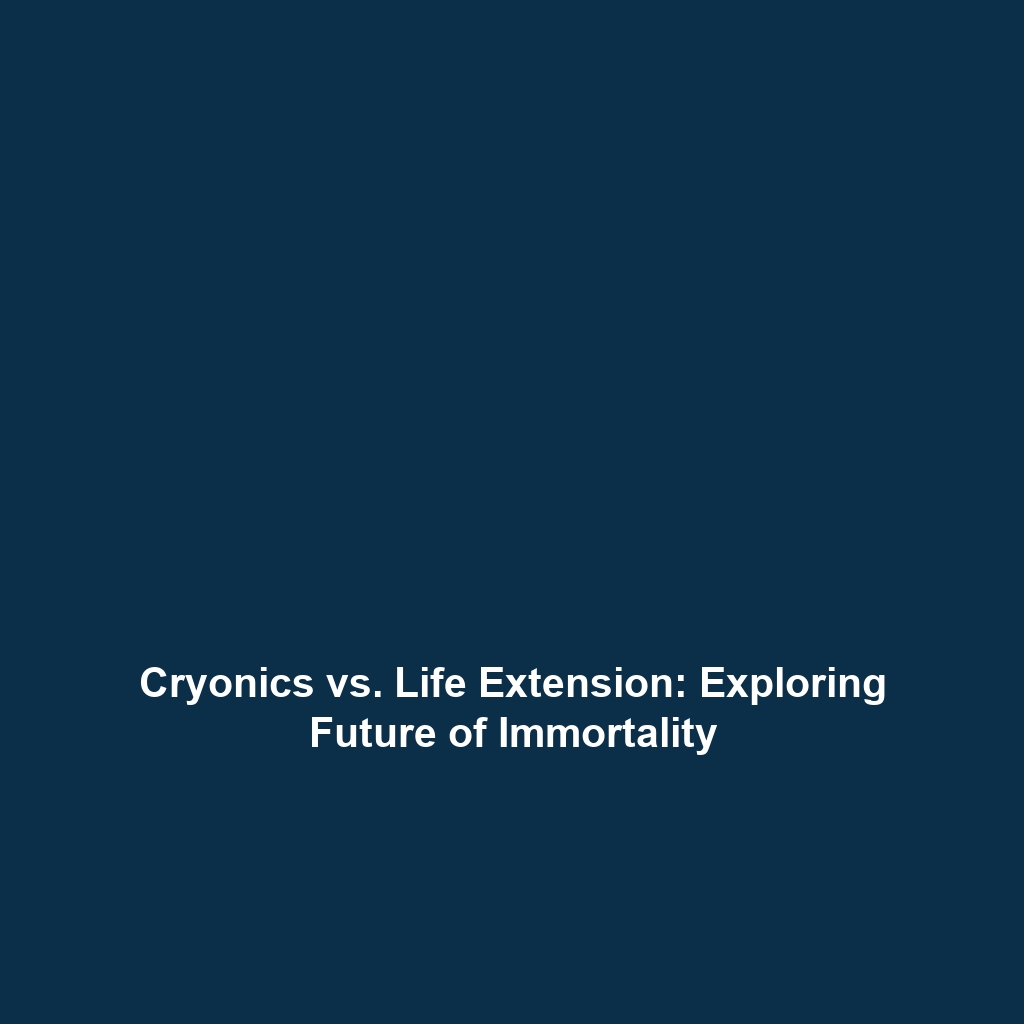Ethical and Philosophical Differences in Cryonics & Life Extension
Cryonics and life extension represent two divergent approaches to human longevity and well-being. While cryonics is often viewed as a “last resort,” a method to potentially revive individuals after clinical death, life extension emphasizes the proactive enhancement of life quality and length through advancements in science and medicine. Understanding these ethical and philosophical differences is essential in the broader context of Cryonics & Life Extension, as it helps frame the debates surrounding mortality, technological capability, and the human condition.
Key Concepts
The distinction between cryonics and life extension can be summarized through several key concepts:
- Cryonics: The process of preserving individuals at low temperatures after death with the hope of future revival via advanced medical technology.
- Life Extension: An interdisciplinary field focused on delaying the aging process and enhancing health span through therapies, lifestyle changes, and medical interventions.
- Ethical Considerations: Discussions typically revolve around the morality and implications of choosing to undergo cryonics versus pursuing life-extending treatments.
Philosophical Underpinnings
The philosophical frameworks guiding these approaches reflect differing beliefs about life, death, and the human experience. Supporters of cryonics often express a belief in potential technological salvation, while advocates for life extension tend to emphasize current, tangible strategies for prolonging life and improving its quality.
Applications and Real-World Uses
The applications of these concepts manifest in several significant ways:
- Clinical Practices: Life extension strategies are integrated into modern healthcare through the use of anti-aging medications, genetic therapies, and wellness programs.
- Research Initiatives: Institutions focus on both cryonics and life extension studies, examining cellular preservation techniques and interventions to delay degeneration.
Understanding how ethical and philosophical differences impact cryonics and life extension can inform public policy and resource allocation for research and development in these domains.
Current Challenges
The study and application of ethical and philosophical differences between cryonics and life extension face numerous challenges, including:
- Scientific Validity: The methods used in cryonics lack consensus within the scientific community regarding their efficacy and viability.
- Societal Acceptance: Growing skepticism and ethical concerns about the implications of cryonics and its perceived commodification of life.
- Legal and Regulatory Issues: Undefined legal statuses for cryopreserved individuals complicate the operational frameworks.
Future Research and Innovations
Innovations in both fields promise to reshape understanding and practices. Upcoming research endeavors and technological advancements in life sciences include:
- Genetic Engineering: Advances in CRISPR and other gene-editing technologies offer potential for life extension through disease prevention.
- Bioengineering: Regenerative medicine is emerging as a significant area for extending healthy lifespan through cell therapies and bio-compatible implants.
- Cryopreservation Enhancements: Improved methods and techniques in cryonics that aim to mitigate cellular damage during the freezing process.
Conclusion
The ethical and philosophical differences between cryonics and life extension not only highlight distinct approaches to addressing human mortality but also invite critical discussion on the implications of technology in our lives. The debate continues to evolve and warrants further exploration in light of emerging scientific insights and societal changing values. For readers interested in diving deeper, consider exploring related topics on longevity and advanced medical technologies.






